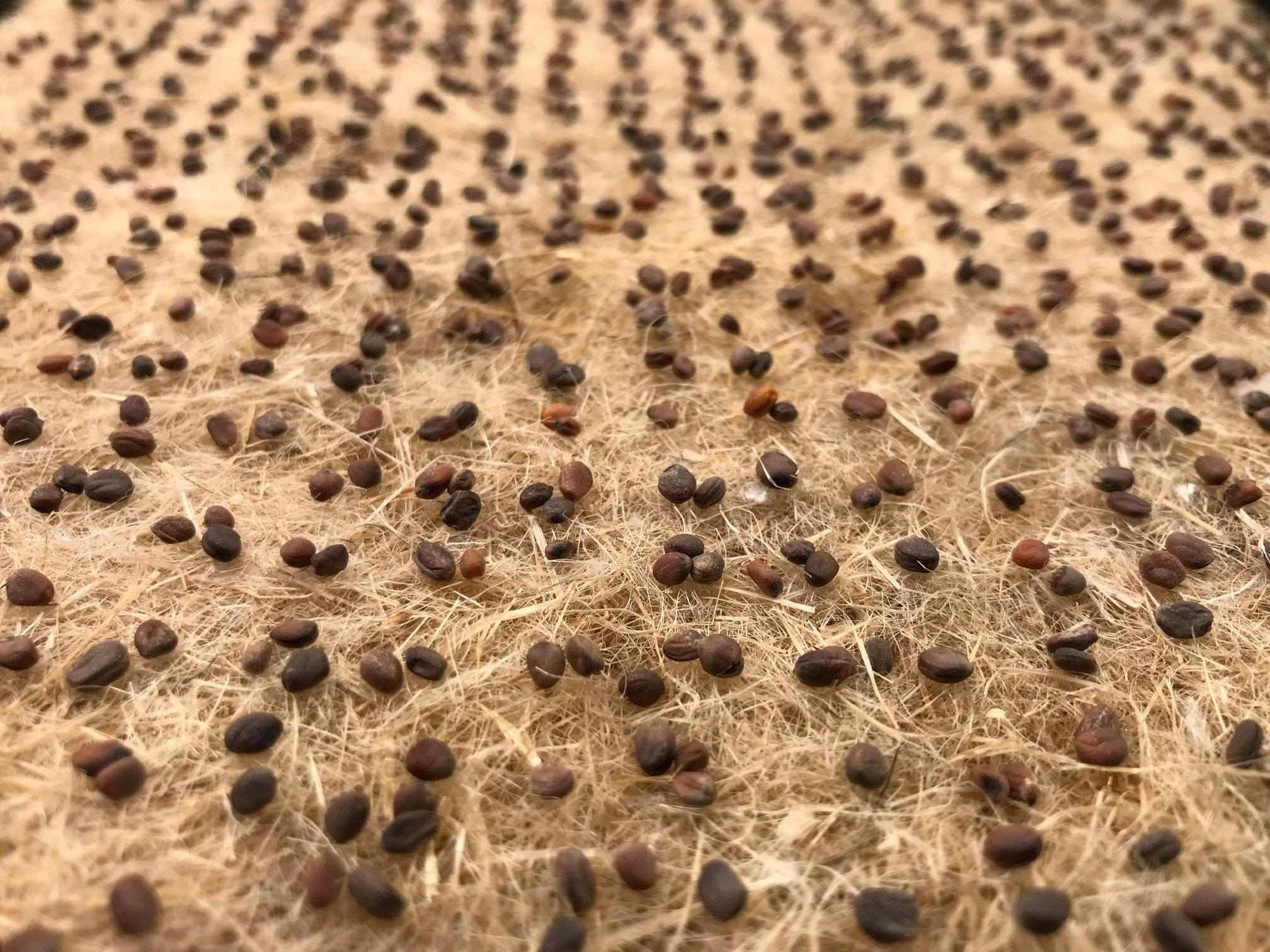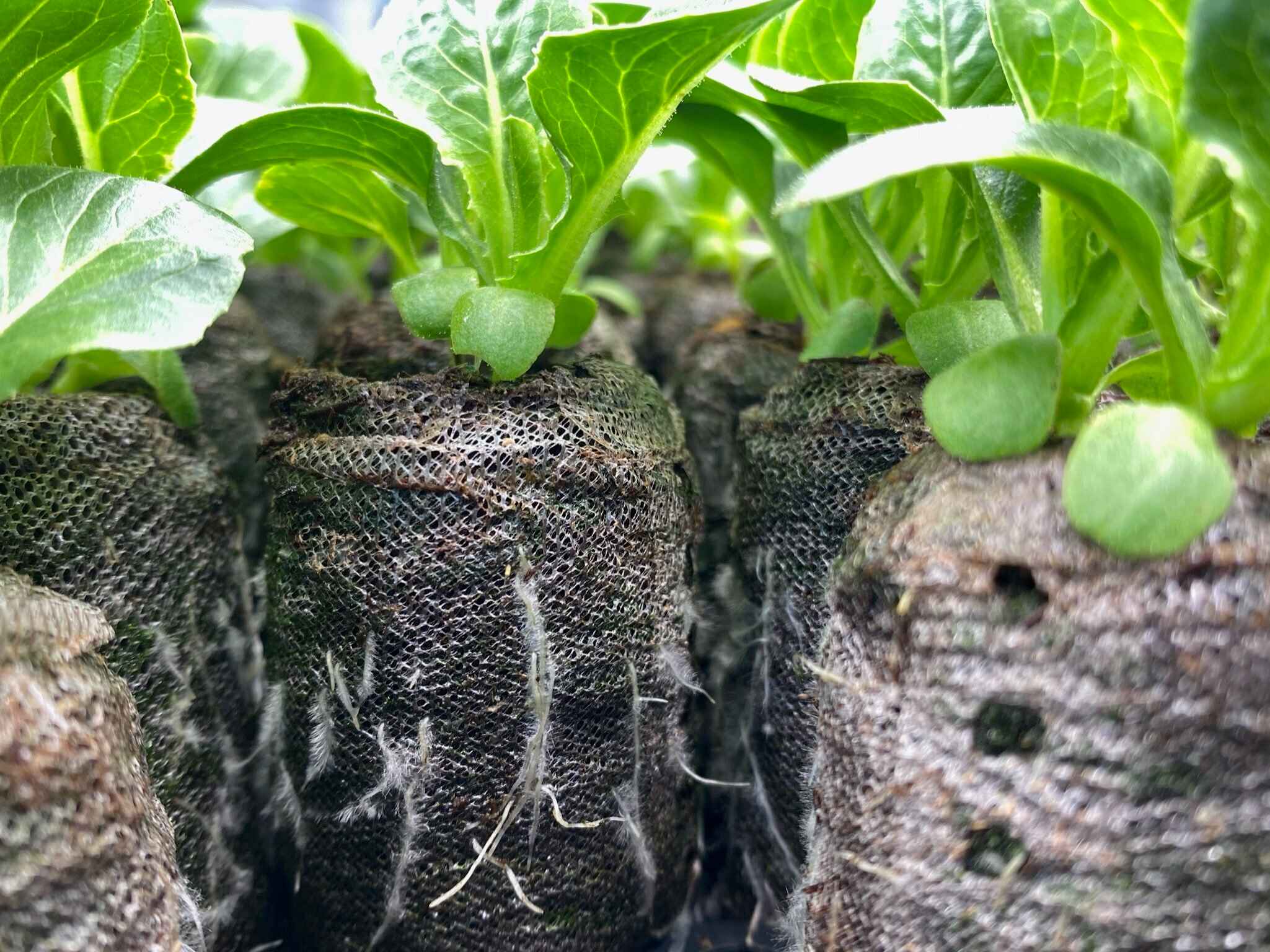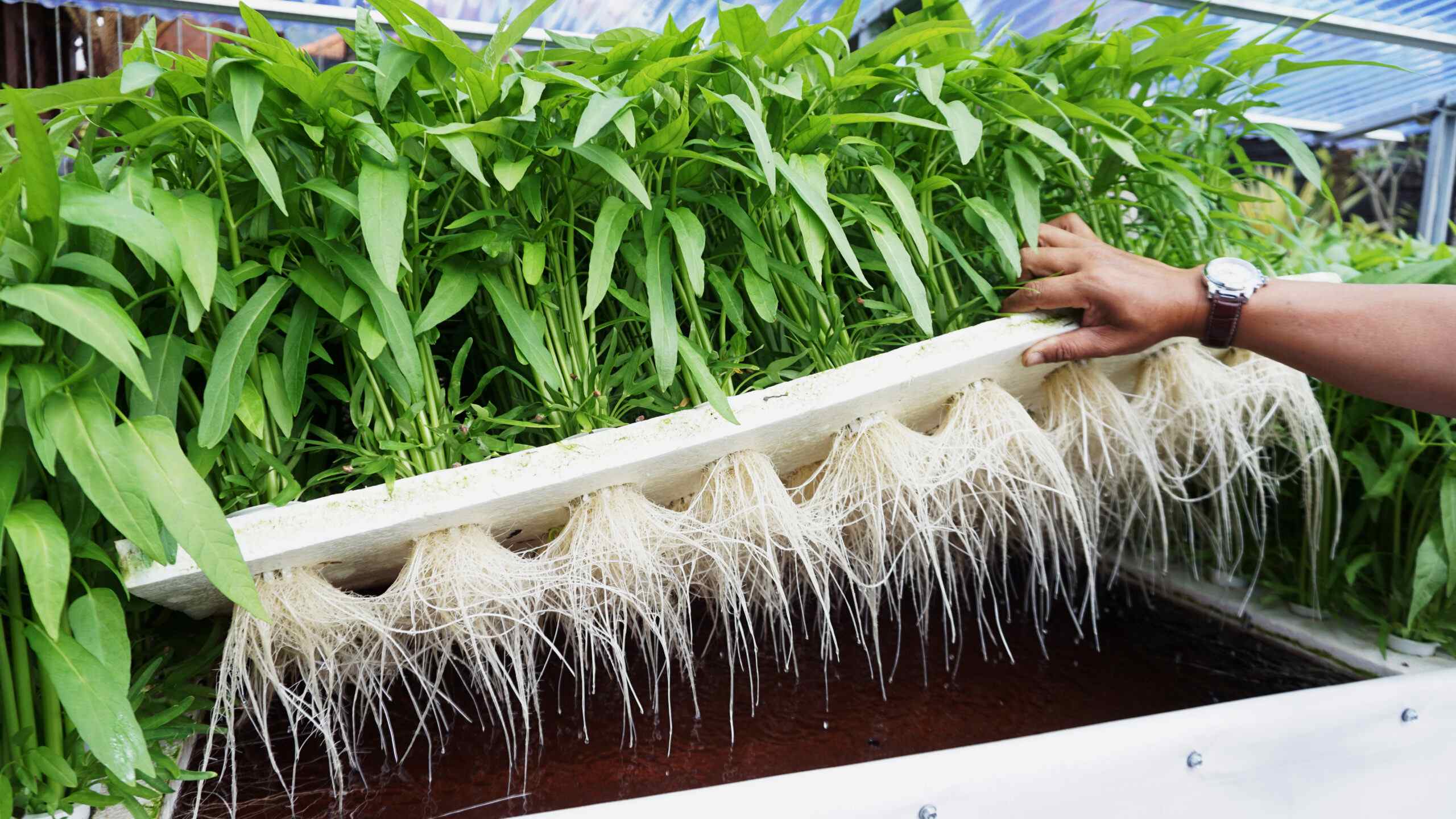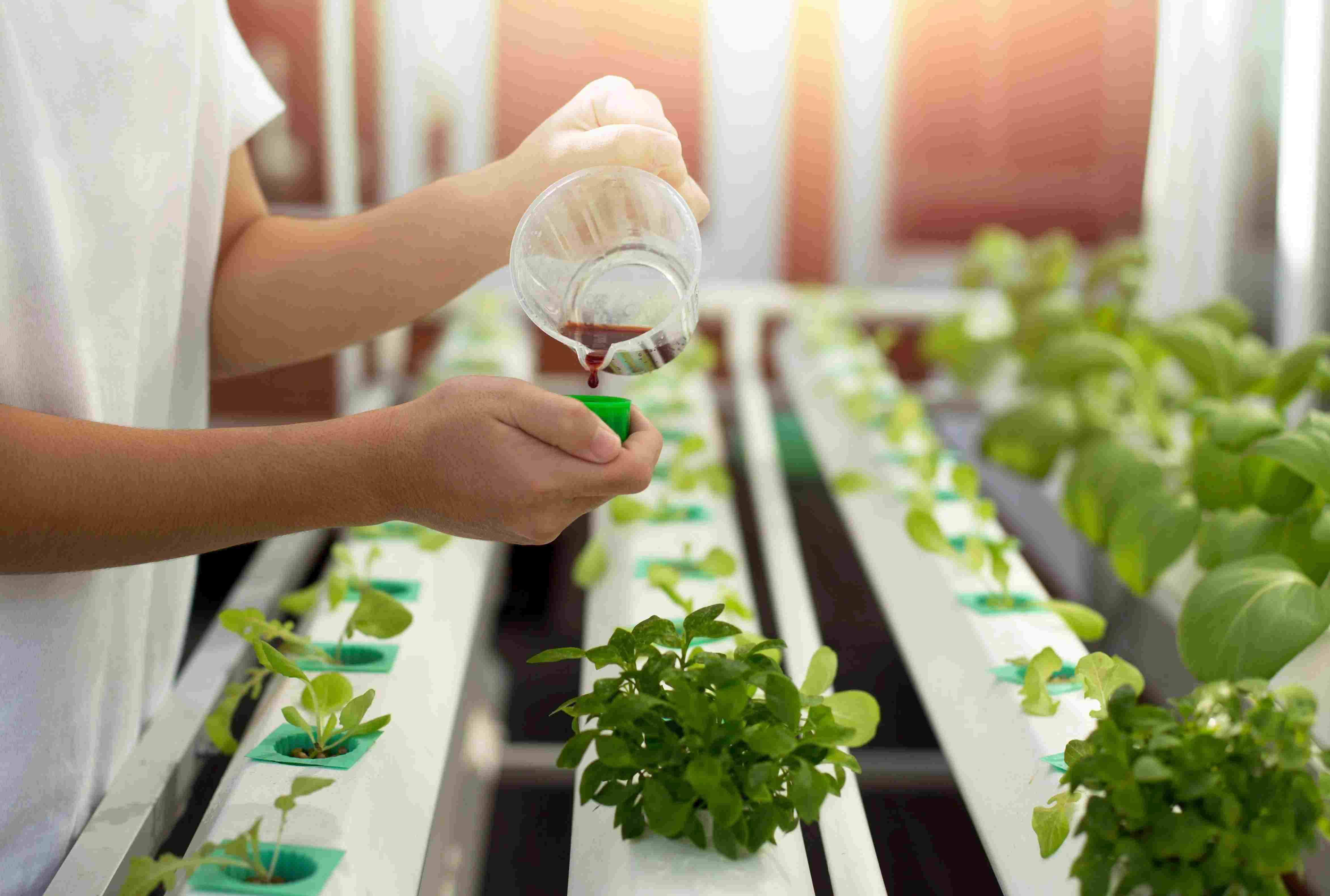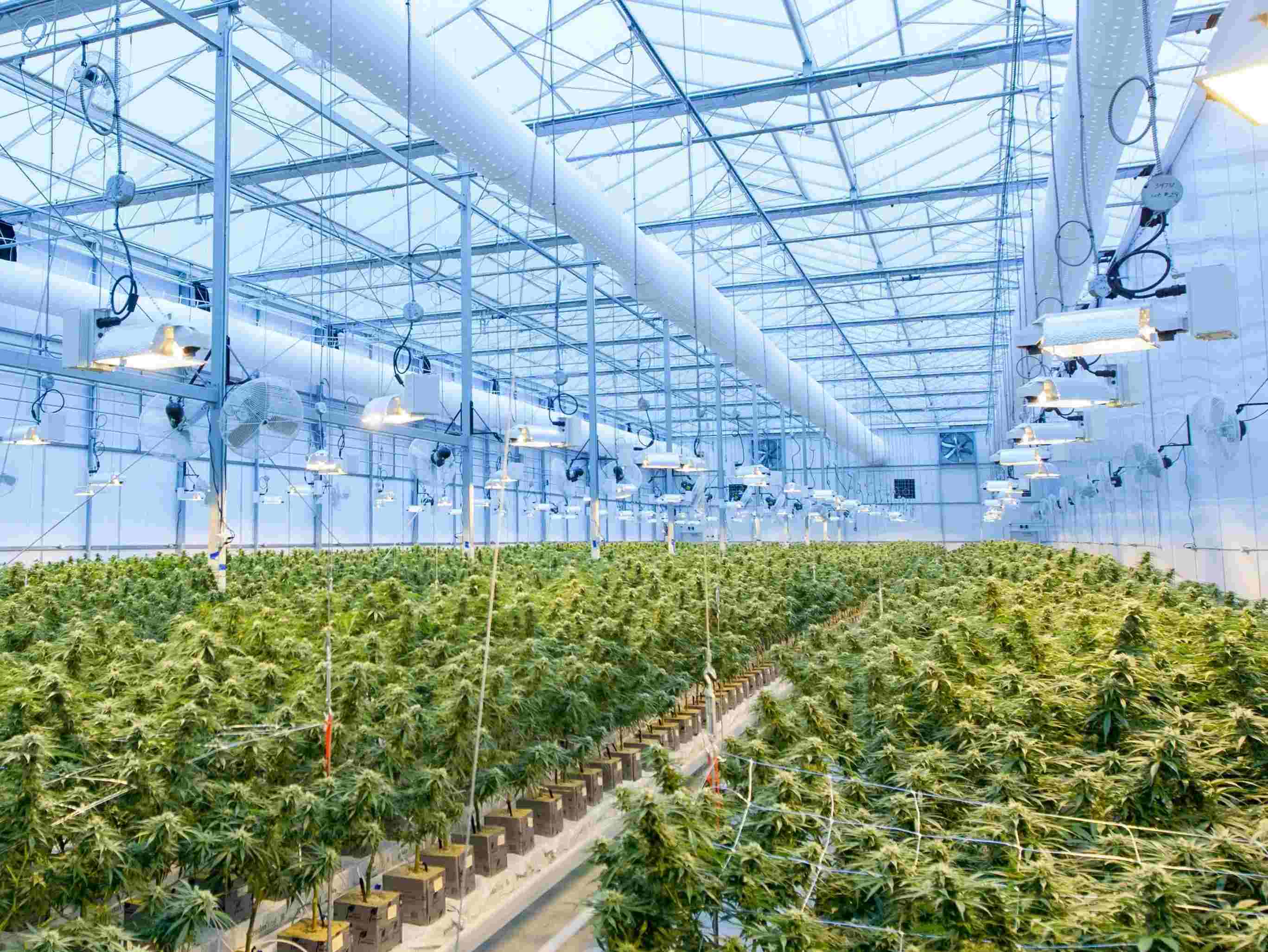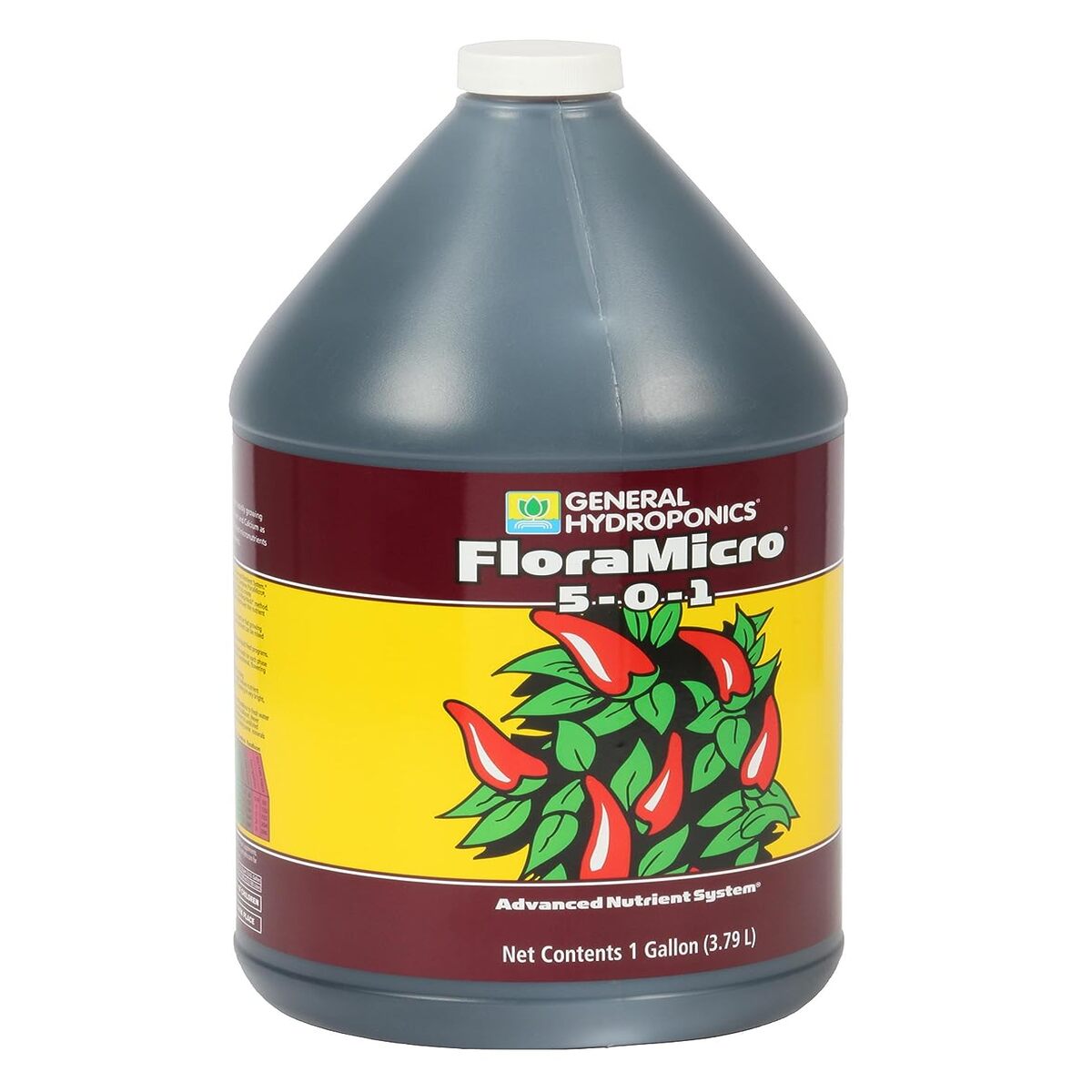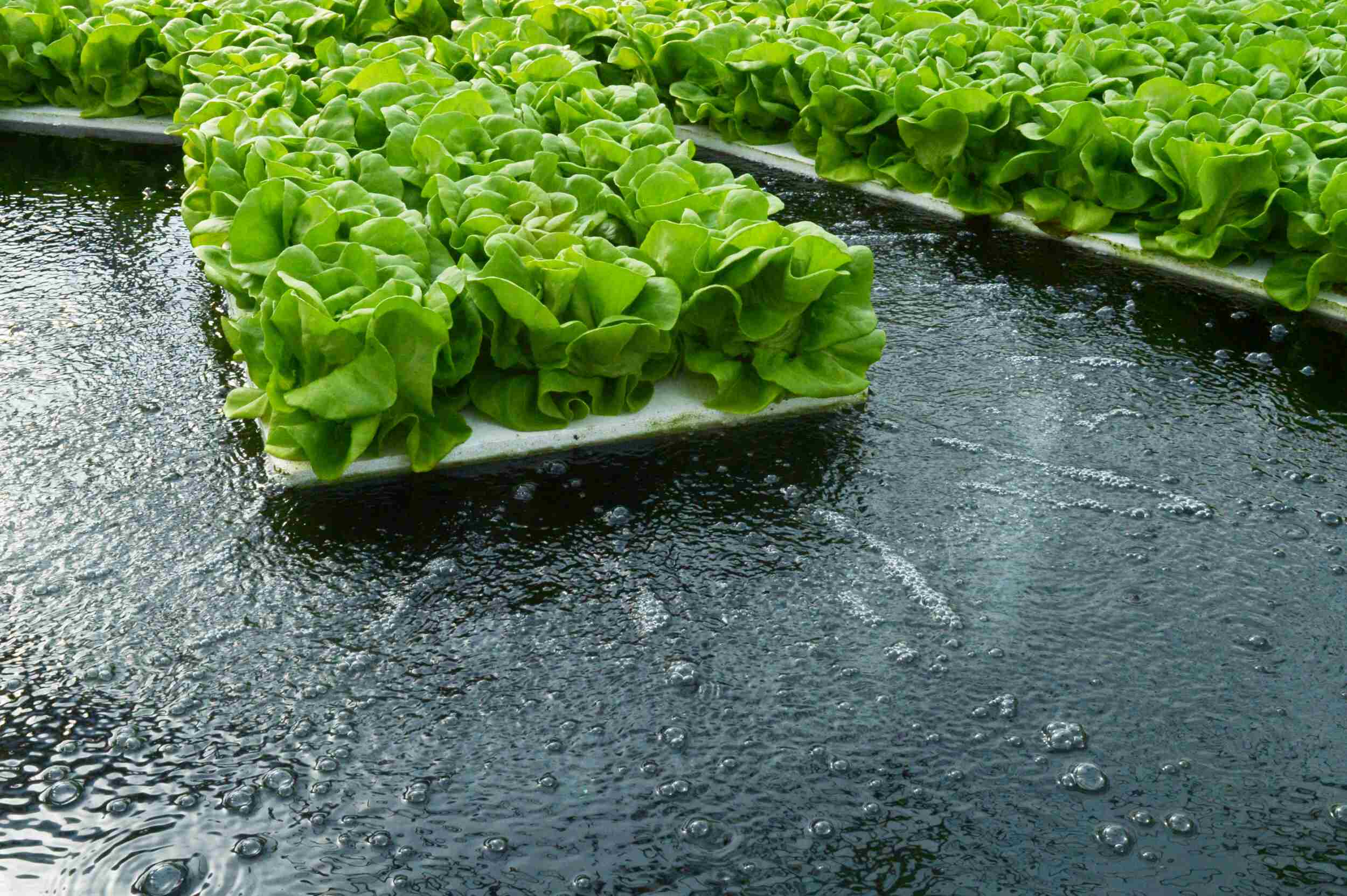Home>Gardening Basics>Getting Started>What Is NFT Hydroponics


Getting Started
What Is NFT Hydroponics
Modified: February 10, 2024
Discover the world of NFT hydroponics and learn how to get started. Enhance your gardening skills with this innovative cultivation method.
(Many of the links in this article redirect to a specific reviewed product. Your purchase of these products through affiliate links helps to generate commission for Chicagolandgardening.com, at no extra cost. Learn more)
Table of Contents
Introduction
Welcome to the world of NFT hydroponics, a cutting-edge technique that combines the art of gardening with the science of technology. If you’re unfamiliar with the term, don’t worry – you’re in the right place. In this article, we’ll dive into the fascinating world of NFT hydroponics and explore its many benefits and applications.
NFT, which stands for Nutrient Film Technique, is a method of growing plants without soil. Instead, plants are suspended in a narrow channel or trough, with a thin film of nutrient-rich solution flowing through the root system. This unique approach to gardening utilizes a recirculating system that provides a constant supply of nutrients and water, allowing plants to thrive in an efficient and controlled environment.
One of the primary goals of NFT hydroponics is to optimize plant growth by mimicking the conditions found in nature. By providing plants with the ideal balance of nutrients, water, and oxygen, NFT hydroponics allows for faster growth and higher yields compared to traditional soil cultivation.
Nowadays, NFT hydroponics has gained popularity among both home gardeners and commercial growers alike. Its simplicity, versatility, and space-saving nature make it an attractive choice for individuals who want to grow their own fresh produce or cultivate crops on a larger scale. Whether you have limited outdoor space or want to extend your growing season, NFT hydroponics offers a sustainable and efficient solution.
In the next sections, we will delve deeper into the workings of NFT hydroponics and the multiple advantages it provides. We will also explore some factors to consider when setting up an NFT system, common crops grown using this technique, and the challenges and limitations that come with it. By the end of this article, you’ll have a comprehensive understanding of NFT hydroponics and how it can revolutionize your gardening experience.
Definition of NFT Hydroponics
NFT hydroponics, or Nutrient Film Technique hydroponics, is a method of growing plants without soil. Instead of planting them in the ground, plants are placed in a trough or channel where a thin film of nutrient-rich water flows over their roots. The roots are exposed to this constant flow of nutrients, creating an ideal environment for plant growth.
Unlike other hydroponic systems that use a solid growing medium like rockwool or perlite to support the plants, NFT hydroponics relies on gravity to circulate the nutrient solution. The nutrient-rich water is pumped to one end of the channel and allowed to flow slowly down towards the other end, creating a continuous cycle that provides a steady supply of nutrients to the plants.
The key feature of NFT hydroponics is the thin film of water that flows over the roots of the plants. This film is typically between 1/8 inch to 1/4 inch thick, ensuring that the roots remain wet without becoming submerged. By keeping the roots moist and providing them with a constant supply of oxygen, NFT hydroponics promotes healthy root development and allows the plants to absorb nutrients more efficiently.
Another distinguishing characteristic of NFT hydroponics is the use of a sloping channel or trough. This angled design allows the nutrient solution to flow in a thin, even film that covers the entire root system. As the water moves through the channel, it picks up oxygen from the air, ensuring the plants’ roots receive the necessary oxygen for respiration.
NFT hydroponics is often preferred by growers due to its simplicity and efficiency. The setup requires minimal equipment, and the maintenance is relatively straightforward. Additionally, NFT systems are known for their water-saving qualities, as the water is continuously recycled and used by the plants, minimizing waste.
This hydroponic technique is highly versatile and can be used to grow a wide range of crops, including leafy greens, herbs, strawberries, and even small fruiting plants. With its controlled environment and optimized nutrient delivery, NFT hydroponics provides plants with the essential elements they need to thrive, resulting in faster growth, higher yields, and healthier, more vibrant crops.
How NFT Hydroponics Works
NFT hydroponics operates on a simple principle: providing plants with a constant flow of nutrient-rich water. Let’s take a closer look at how this innovative system works.
The setup begins with a sloping channel or trough, typically made of plastic or PVC. The channel is slightly angled to allow gravity to assist in the flow of the nutrient solution. At one end, a pump is used to deliver the water and nutrients to the highest point of the channel.
As the nutrient solution enters the channel, it flows under the force of gravity, forming a thin film that covers the bottom surface. The roots of the plants are positioned directly in this film of water, ensuring they have constant access to the necessary nutrients.
The nutrient film flows smoothly down the channel, bathing the roots and providing them with the essential elements required for growth. As the water moves along, it gradually loses volume due to absorption by the roots. At the end of the channel, the water is collected and redirected back to the nutrient reservoir to begin the cycle again.
This continuous flow of nutrient-rich water in a thin film is what sets NFT hydroponics apart from other methods. By providing a constant supply of nutrients and oxygen to the roots, plants can uptake the necessary elements more efficiently, resulting in faster growth and healthier plants.
Along with the circulating nutrient solution, oxygen also plays a vital role in NFT hydroponics. The angle of the channel allows for air to come into contact with the flowing water, facilitating oxygenation. This is crucial for root respiration, as oxygen promotes healthy root development and prevents the roots from becoming waterlogged.
In addition to the channel setup, NFT hydroponics requires a well-designed nutrient reservoir. This reservoir contains the nutrient solution that is pumped into the channel. It is important to monitor the nutrient levels and pH of the solution to ensure the plants receive the appropriate balance of nutrients.
Overall, NFT hydroponics offers a straightforward yet highly effective method of growing plants. The constant flow of nutrient-rich water, combined with optimal oxygenation, creates an ideal environment for plants to thrive. This system is not only efficient but also allows for precise control over nutrient delivery, resulting in healthy, vigorous plants with high yields.
Benefits of NFT Hydroponics
NFT hydroponics offers numerous benefits that make it an attractive choice for growers. Here are some key advantages of using NFT hydroponics:
- Water Efficiency: NFT hydroponics is a water-saving technique. The closed-loop system recirculates the nutrient solution, minimizing water waste compared to traditional soil-based growing. This makes NFT hydroponics an environmentally friendly option, particularly in regions with water scarcity.
- Optimized Nutrient Delivery: With NFT hydroponics, plants receive a constant supply of nutrients. The flowing nutrient film ensures that the root system has access to a balanced combination of essential elements, promoting healthy growth and maximizing yields.
- Fast Growth and High Yields: Since plants in NFT hydroponics systems receive an ideal balance of nutrients and oxygen directly to their roots, they can grow faster and produce higher yields compared to traditional soil-based methods. This is especially advantageous for commercial growers looking to optimize productivity.
- Space Efficiency: NFT hydroponics is a space-saving solution, making it suitable for urban gardening and indoor cultivation. The system can be set up vertically to maximize the use of limited space, allowing individuals to grow a significant amount of crops in a small area.
- Year-Round Cultivation: With NFT hydroponics, growers have the ability to control the growing environment, including temperature, light, and nutrient levels. This allows for year-round cultivation regardless of climate or season. It also enables the growth of crops that are not native to the region, expanding the range of produce that can be cultivated.
- Pest and Disease Control: NFT hydroponics reduces the risk of pests and diseases commonly associated with soil-based farming. Since plants are not in contact with soil, they are less vulnerable to soil-borne pathogens and pests. This reduces the need for pesticides and other chemical interventions, resulting in cleaner and safer produce.
- No Weeding: In traditional soil-based gardening, the significant time and effort required for weeding can be overwhelming. With NFT hydroponics, there is no need for weeding, saving growers valuable time and energy for other tasks.
- Study and Research: NFT hydroponics is widely used in educational institutions and research facilities as an efficient and controlled method for studying plant growth and conducting experiments. Its simplicity and effectiveness make it a valuable tool for scientific investigations and discoveries.
These benefits demonstrate why NFT hydroponics is gaining popularity among gardeners and farmers alike. Whether you’re looking to reduce water consumption, maximize yield, or have year-round access to fresh produce, NFT hydroponics offers a sustainable and efficient solution.
Factors to Consider for NFT Hydroponics Setup
Setting up an NFT hydroponics system requires careful planning and consideration of several factors. Here are some key aspects to take into account:
- Location: Identify a suitable location for your NFT hydroponics system. It can be set up indoors, on a balcony, or in a greenhouse. Ensure that the location receives adequate light and has proper ventilation to maintain optimal growing conditions.
- Space and Size: Determine the amount of space available for your NFT system. Consider the size and dimensions of the channel or trough, as well as the number of plants you intend to grow. Remember to allow for sufficient space for plant growth and easy access for maintenance.
- Lighting: Adequate lighting is crucial for plant growth. Assess the light levels in the chosen location and supplement with artificial lighting if necessary. Depending on the type of plants you plan to grow, you may need to invest in grow lights that emit the appropriate spectrum for photosynthesis.
- Nutrients: Select the right nutrient solution for your crops. The nutrient solution should have a balanced mixture of macro and micronutrients to support plant growth. It is recommended to use commercially available hydroponic nutrient blends specifically formulated for NFT systems.
- pH and EC Levels: Regularly monitor and adjust the pH and electrical conductivity (EC) levels of the nutrient solution. The ideal pH range for NFT hydroponics is typically between 5.5 and 6.5, although it may vary slightly depending on the crops being grown.
- Temperature and Humidity: Maintain the appropriate temperature and humidity levels within the growing area. Most crops thrive in temperatures between 65°F and 80°F (18°C and 27°C) with humidity levels ranging from 50% to 70%. Consider using fans or ventilation systems to regulate temperature and humidity.
- Water Quality: Ensure that the water used in your NFT system is of high quality. The water should be free from contaminants, such as chlorine or heavy metals, which can be harmful to plants. If necessary, use a water filtration or dechlorination system to improve water quality.
- Plant Selection: Choose plants that are well-suited for NFT hydroponics. Leafy greens, herbs, and smaller fruiting plants like strawberries are commonly grown in NFT systems. Research the specific requirements of different plant varieties and select those that thrive in hydroponic environments.
- Maintenance and Monitoring: Regularly inspect the system for clogs, leaks, or any issues that may affect the nutrient flow. Check the nutrient levels, pH, and EC values regularly and make adjustments as needed. Regularly clean the channels and remove any debris or algae to maintain optimal conditions.
- Education and Knowledge: Before setting up an NFT hydroponics system, familiarize yourself with the principles and techniques of hydroponic gardening. Read books, attend workshops, or seek guidance from experienced growers to gain a thorough understanding of NFT hydroponics and its best practices.
By considering these factors and taking the necessary steps to set up and maintain your NFT hydroponics system properly, you can ensure successful and prolific growth of your plants. Remember that NFT hydroponics is a dynamic and evolving field, so continuous learning and experimentation are essential to achieve the best results.
Common Crops Grown using NFT Hydroponics
NFT hydroponics offers a versatile growing system that can accommodate a wide range of crops. Here are some common crops that thrive in NFT hydroponics:
- Leafy Greens: Lettuce, kale, spinach, Swiss chard, and other leafy greens are well-suited for NFT hydroponics. They have shallow root systems and grow quickly, making them ideal for this efficient growing method.
- Herbs: Basil, parsley, cilantro, mint, and other herbs thrive in NFT hydroponic systems. They require higher humidity levels and benefit from the controlled environment and precise nutrient delivery provided by NFT hydroponics.
- Strawberries: Strawberries are popular among NFT hydroponic growers due to their unique growing habit. The vertical setup of NFT systems allows for efficient space usage, making it possible to grow a significant number of strawberry plants in a limited area.
- Small Fruiting Plants: Some small fruiting plants, such as cherry tomatoes, peppers, and cucumbers, can be successfully cultivated in NFT hydroponics. Adequate support systems, trellis, and pruning techniques may be necessary to accommodate their growth habit.
- Microgreens: Microgreens, such as broccoli sprouts, sunflower sprouts, and radish sprouts, are popular in NFT systems. The controlled environment of NFT hydroponics allows for faster and consistent growth of these nutrient-dense greens.
- Edible Flowers: NFT hydroponics can also be used to grow a variety of edible flowers like nasturtiums, marigolds, and pansies. These vibrant flowers can add a decorative and flavorful touch to dishes and salads.
- Asian Greens: Bok choy, Chinese cabbage, and other Asian greens thrive in NFT hydroponics. Their quick growth and ability to tolerate high humidity make them well-suited for this system.
- Watercress: Watercress is a semi-aquatic plant that flourishes in NFT hydroponic systems. Its distinctive flavor and high nutritional value make it a desirable crop for hydroponic growers.
These are just a few examples of the many crops that can be successfully cultivated in NFT hydroponics. The key is to select crops that have compatible growth habits, nutrient requirements, and can thrive in the controlled environment provided by NFT systems.
When choosing crops for your NFT hydroponics setup, consider your personal preferences, market demand, and the yields you wish to achieve. Experimentation and exploring new crops can also be an exciting way to discover the full potential of your NFT system.
Challenges and Limitations of NFT Hydroponics
While NFT hydroponics offers numerous benefits, it is essential to be aware of the challenges and limitations associated with this growing method:
- Root Health: Maintaining proper root health can be a challenge in NFT hydroponics. Since the roots are constantly submerged in a thin film of water, there is a higher risk of root rot or nutrient deficiencies if the nutrient solution becomes imbalanced or stagnant. Regular monitoring and adjustment of nutrient levels are crucial to avoid these issues.
- System Malfunctions: Equipment malfunction, such as pump failure or clogged channels, can disrupt the nutrient flow in an NFT hydroponics system. Regular maintenance and monitoring are necessary to ensure the system is functioning correctly and to address any issues promptly.
- Temperature Control: Controlling the temperature in NFT hydroponics can be a challenge, especially in hot climates or during summer months. High temperatures can lead to elevated nutrient solution temperatures, potentially damaging the roots and affecting plant growth. Implementing cooling systems or selecting heat-tolerant crops can help mitigate this challenge.
- Plant Support: Some crops, such as trellised tomatoes or heavier fruiting plants, may require additional support in an NFT system. Without proper support, the weight of the plants and fruits can cause them to fall or break, potentially damaging the entire system or affecting neighboring plants.
- Oxygenation: Maintaining sufficient oxygen levels in the nutrient solution is crucial for healthy root development. In NFT hydroponics, oxygenation can be challenging as the thin film of water may not provide enough dissolved oxygen for the roots. Supplemental aeration or the use of air stones can help increase oxygen levels and prevent oxygen deprivation in the root zone.
- Crop Selection: Although many crops can be grown in NFT hydroponics, certain plants with extensive root systems or deep-rooted growth habits may not be suitable for this method. Root crops like carrots or plants with large taproots may have difficulty spreading and thriving in the narrow channels of an NFT system.
- Initial Investment: Setting up an NFT hydroponics system may require an initial investment in equipment, including pumps, channels, and a nutrient reservoir. Additionally, ongoing costs, such as electricity to power the system and the expense of nutrient solutions, should be considered. However, the potential long-term savings on water usage and increased crop yields can outweigh the initial investment.
Understanding and addressing these challenges and limitations can help maximize the success of your NFT hydroponics venture. By carefully managing the system’s conditions, selecting suitable crops, and staying vigilant with maintenance, you can overcome these obstacles and enjoy the many benefits that NFT hydroponics has to offer.
Conclusion
NFT hydroponics is a remarkable technique that offers a sustainable and efficient way to grow plants without soil. By providing a constant flow of nutrient-rich water over the roots, NFT hydroponics optimizes plant growth and allows for higher yields compared to traditional soil-based cultivation methods.
Throughout this article, we explored the definition and workings of NFT hydroponics, including its unique features and benefits. We learned about the factors to consider when setting up an NFT system, the common crops that thrive in this method, and the challenges and limitations that growers may face.
Despite the challenges, NFT hydroponics offers numerous advantages, including water efficiency, optimized nutrient delivery, space utilization, and year-round cultivation. It is a dynamic and versatile growing method that can be used by both home gardeners and commercial growers to produce a wide variety of crops.
As with any farming technique, success in NFT hydroponics requires careful attention to detail, regular monitoring, and ongoing maintenance. By understanding the needs of your plants, maintaining proper nutrient balance, and creating an optimal growing environment, you can achieve impressive results.
Whether you aspire to grow your own fresh produce, explore indoor gardening options, or maximize productivity in a commercial setting, NFT hydroponics offers an innovative and sustainable solution. With its ability to revolutionize traditional farming methods, NFT hydroponics holds incredible potential for the future of agriculture.
So, why not give NFT hydroponics a try? Embrace the possibilities, unleash your creativity, and embark on a journey of vibrant and bountiful harvests.
